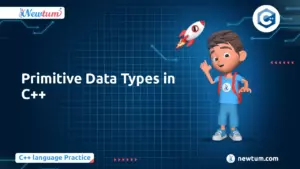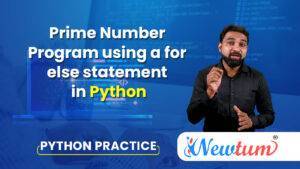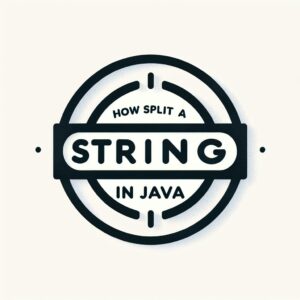Are you new to coding and curious about how we manage data in databases? Then you’re in the right place! Welcome to this Introduction to Data Manipulation Language, where we’ll explore the fascinating world of DML. In simple terms, Data Manipulation Language refers to the set of commands used to interact with and modify data within databases. Whether you’re adding new information, updating existing data, or simply retrieving data for a report, DML is your go-to tool. Stick around, and you’ll gain a solid understanding of how these commands bring data to life, making your programming journey smoother and more fun!
Basics of Data Manipulation Language Operations
-- Creating a sample table
CREATE TABLE Students (
ID INT PRIMARY KEY,
Name VARCHAR(50),
Age INT,
Grade CHAR(1)
);
-- Inserting data into the table
INSERT INTO Students (ID, Name, Age, Grade) VALUES (1, 'Rahul', 20, 'A');
INSERT INTO Students (ID, Name, Age, Grade) VALUES (2, 'Anita', 19, 'B');
INSERT INTO Students (ID, Name, Age, Grade) VALUES (3, 'Suresh', 21, 'C');
-- Selecting all data from the table
SELECT * FROM Students;
-- Updating data in the table
UPDATE Students SET Grade = 'B' WHERE Name = 'Suresh';
-- Deleting data from the table
DELETE FROM Students WHERE Age = 20;
Explanation of the Code:
Let’s dive into this SQL code step by step to understand how data manipulation is done. If you’re new to coding, don’t worry—I’ll walk you through it!
- The code begins by creating a table named “Students.” This table has four columns: “ID,” “Name,” “Age,” and “Grade.” The “ID” column is specified as the primary key, ensuring each student has a unique identifier.
- Next, data is inserted into this table. Three entries are added, representing different students: Rahul, Anita, and Suresh, with their respective details.
The “SELECT” statement retrieves and displays all the data from the “Students” table, helping us view the records we’ve just inserted.
The “UPDATE” operation changes Suresh’s grade from ‘C’ to ‘B’. We specify the condition using “WHERE” to update only Suresh’s record.
Lastly, the “DELETE” statement removes the entry where the student’s age is 20. In this case, that’s Rahul, who gets removed from our table.
Output
ID | Name | Age | Grade
1 | Rahul | 20 | A
2 | Anita | 19 | B
3 | Suresh| 21 | C
ID | Name | Age | Grade
2 | Anita | 19 | B
3 | Suresh| 21 | B
Real-Life Uses of Data Manipulation Language
Here are a real-life examples of ‘Introduction to Data Manipulation Language’:
- Managing E-commerce Websites:
Data Manipulation Language (DML) plays a significant role in managing categories, products, and customer data on e-commerce websites like Amazon and Flipkart. For example, when you add a product to your cart, the underlying database uses DML to update inventory stats and store your chosen products for future purchase. It’s a seamless way of ensuring data consistency and accuracy behind the scenes. - Online Banking Transactions:
When you’re using online banking, DML helps execute critical transactions like transferring money, updating account balances, or checking transaction history, efficiently and securely. The operations conducted via DML ensure that the details you see on your screen reflect real-time data, maintaining the accuracy of your financial standing. - School Management Systems:
Schools and colleges leverage DML in their management systems for numerous tasks like recording student attendance, updating academic records, or even managing library books. When a teacher adds a test score, that’s a DML operation happening right before your eyes, ensuring student data is always up-to-date and correct. - Social Media Platforms:
Social media platforms like Facebook and Instagram use DML extensively to handle user data. Activities such as posting updates, liking pictures, or changing your profile picture rely on DML operations to update and retrieve data smoothly, maintaining user activity seamlessly.
Along with learning What is DML? Also, Recap about basic SQL Queries.
Top Interview Questions on Data Manipulation Language Basics
- What is Data Manipulation Language (DML)?
Data Manipulation Language refers to a subset of SQL used to retrieve, insert, update, and delete data in a database. - What are the common DML commands?
The common DML commands are SELECT, INSERT, UPDATE, and DELETE. - How does the DELETE command differ from TRUNCATE?
DELETE removes specific rows based on a condition, while TRUNCATE removes all rows from a table. - Can DML changes be rolled back?
Yes, DML changes can be rolled back if they’re part of a transaction and haven’t been committed. - Why is DML important in database management?
DML is important because it allows users to interact with and manipulate the data stored in databases effectively.
Ever struggled with setting up a compiler? Our AI-powered Java online compiler changes the game. Write, run, and test your Java code instantly, making learning or project development a breeze with cutting-edge technology.
Conclusion
In summary, the ‘Introduction to Data Manipulation Language’ teaches how to interact with databases using simple commands like INSERT, UPDATE, DELETE, and SELECT. These actions make handling data within databases efficient and are pivotal in programming and development tasks. As you get comfortable with these commands, you’ll find them indispensable in real-world scenarios. For more tutorials and insights, explore Newtum and enhance your coding skills. Keep experimenting and practicing these commands to become adept at manipulating data. Ready to dive deeper? Explore advanced techniques and broaden your programming horizons!
Edited and Compiled by
This blog was compiled and edited by Rasika Deshpande, who has over 4 years of experience in content creation. She’s passionate about helping beginners understand technical topics in a more interactive way.



